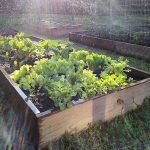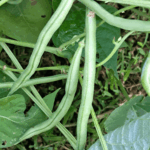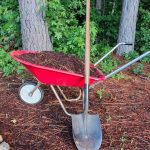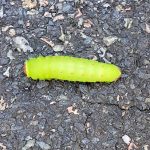Have you ever spotted a plant that’s new to you – and then you search for it online, and it seems like the whole world is talking about it and somehow you missed the memo? That’s how I feel about the Pineberry (Fragaria x ananassa).
It was snowing and nasty today, so I spent the day cleaning, doing laundry, making homemade chicken soup and baking bread. I took a break from all this domesticity to put my feet up and have a cup of tea. I grabbed the first catalog on the pile I’d set aside to look at from this week’s mail collection and there it was, right there on page 2. The pineberry.
So what is a pineberry? According to the catalog, it’s a hybrid strawberry that tastes like a strawberry with pineapple flavor. I love strawberries. I love pineapples. What’s not to love with this?
Better still, the unique appearance is adorable. Can you image sliced ruby-red strawberries with their creamy white seeds interspersed on a plate with the white pineberry with the ruby-red seeds? Adorable, I say. Invite my friends for an afternoon garden tea, I say. Well, that’s my imagination going a mile a minute – a hazard for a writer.
I hopped online and started reading up on the pineberry to make sure it wasn’t a weird trick to get me to buy yet another variety of strawberry or a genetically modified freak I wouldn’t want to eat. I was pleasantly surprised.
Growing Pineberry: Facts About Pineberry
- It’s a natural hybrid, meaning it was created by crossing two plants the old-fashioned way, by crossing two strawberry species. No GMOs here. No weird gene splicing.
- It grows wherever you can grow strawberries, and under the same or similar conditions. I like that. I know how to grow strawberries; I think I can grow this without killing it.
- Plants bear in the spring, and sometimes a lighter crop in the fall. That’s very similar to ever-bearing strawberries, and I found out that the parent plants were ever bearing berries, so that makes sense. And I like the taste of every-bearers – another plus!
- They don’t like extreme heat or cold. I normally cover my strawberry bed with pine straw mulch, which is simply pine needles raked from the woods around my garden. During the heat of the Virginia summers, I may need to cover these plants again.
- They can be grown indoors, making them a great choice for urban gardeners. So take heart, my city friends; if you love to garden, these berries might be great balcony plants or plants to add to your collection inside!
I did learn that pineberry seeds don’t exist, so if you see advertisements offering a great deal on pineberry seeds, I’ve got a bridge to sell you in Brooklyn. Seriously, they do make seeds, but the seeds don’t produce true pineberry plants. The reason there’s no such thing as pineberry seeds is that as a hybrid, the seeds from the pineberry do not produce genetic copies of the hybrid. You’ll get various types of strawberry plants from seeds marketed as pineberry seeds, but it’s doubtful you will grow a pineberry plant.
One of my goals for the garden this year is to grow a greater variety of fruits and vegetables. I had hoped to add blueberry bushes and perhaps a raspberry plant or two, but now I’ve got my eye on the pineberry!
You can purchase plants from the Burpee seed and plant catalog. If you buy anything from clicking the link, I receive a small commission, but it does not affect your price. Click the picture to visit the vendor’s website.
Burpee
More Information on Pineberry Cultivation
- Garden Culture Magazine: Pineberry
- Pineberry Q & A from Stark Brother’s Nursery






